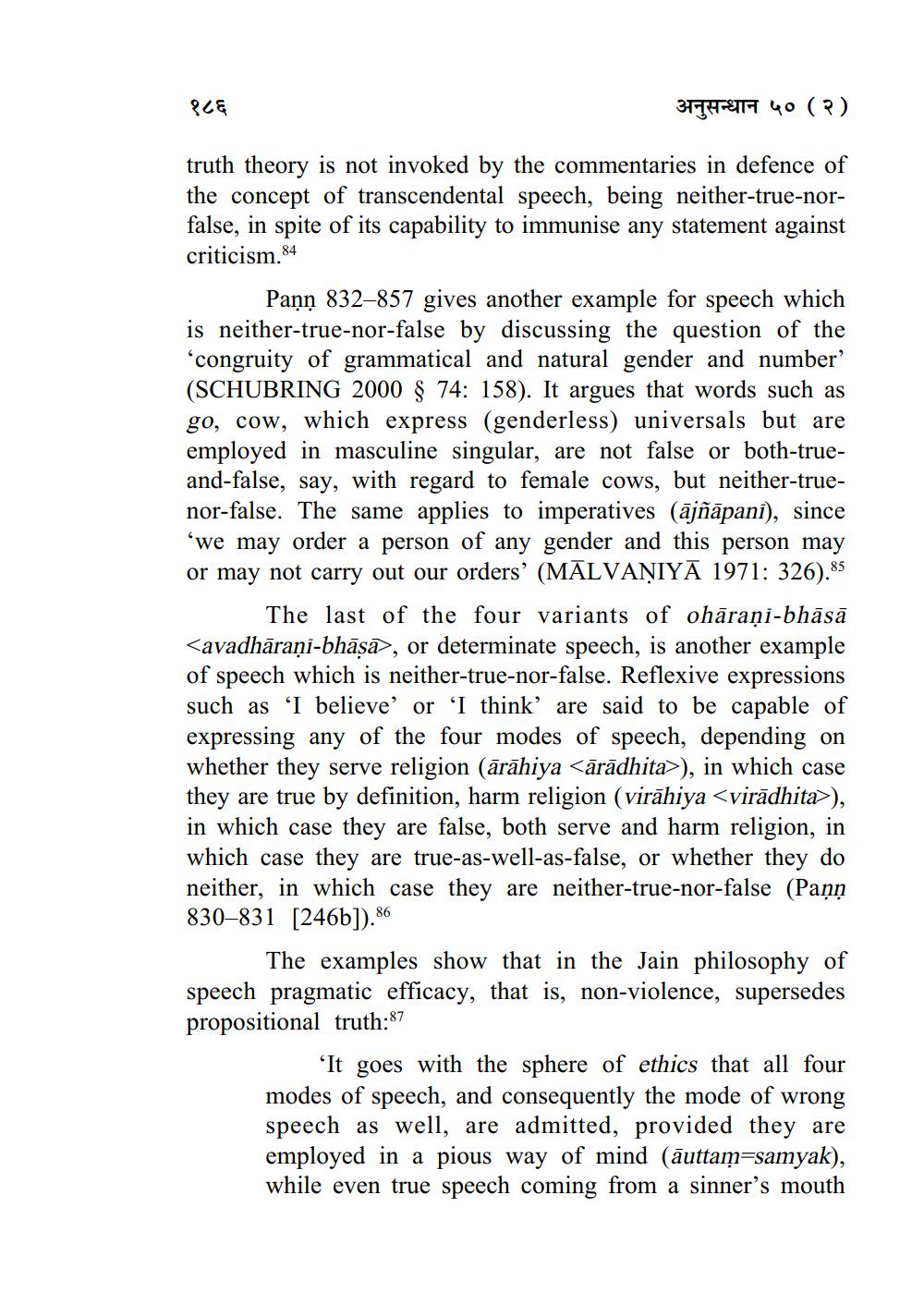________________
१८६
31LHETA 40 ()
truth theory is not invoked by the commentaries in defence of the concept of transcendental speech, being neither-true-norfalse, in spite of its capability to immunise any statement against criticism. 84
Paņņ 832–857 gives another example for speech which is neither-true-nor-false by discussing the question of the 'congruity of grammatical and natural gender and number' (SCHUBRING 2000 § 74: 158). It argues that words such as go, cow, which express (genderless) universals but are employed in masculine singular, are not false or both-trueand-false, say, with regard to female cows, but neither-truenor-false. The same applies to imperatives (ājñāpani), since ‘we may order a person of any gender and this person may or may not carry out our orders' (MĀLVAŅIYĀ 1971: 326).85
The last of the four variants of ohāraṇi-bhāsā <avadhāraṇi-bhāṣā, or determinate speech, is another example of speech which is neither-true-nor-false. Reflexive expressions such as 'I believe' or 'I think' are said to be capable of expressing any of the four modes of speech, depending on whether they serve religion (ārāhiya <ārādhita>), in which case they are true by definition, harm religion (virāhiya <viradhita), in which case they are false, both serve and harm religion, in which case they are true-as-well-as-false, or whether they do neither, in which case they are neither-true-nor-false (Paņņ 830–831 [246b]).86
The examples show that in the Jain philosophy of speech pragmatic efficacy, that is, non-violence, supersedes propositional truth:87
'It goes with the sphere of ethics that all four modes of speech, and consequently the mode of wrong speech as well, are admitted, provided they are employed in a pious way of mind (āuttam=samyak), while even true speech coming from a sinner's mouth




